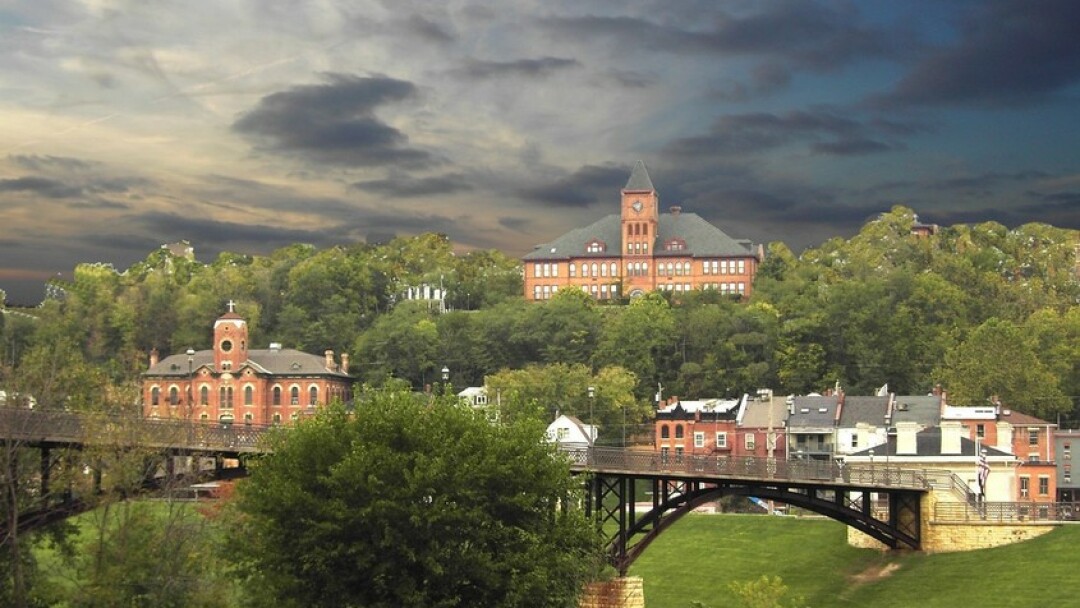The Galena Experience
the revival of an Illinois river city offers lessons for Eau Claire

I recently returned home from a relaxing vacation with my wife at Galena, Ill. It is a beautiful little town nestled between two tall hills along the Galena River a short distance from its confluence with the Mississippi.
My wife, Ann, is energized mostly by the shopping and sightseeing on our trips. For me, it is the history and culture of our destination. As I learned about the rich history of Galena, I couldn’t help but think about the crossroads we are at in Eau Claire. I wondered if there were lessons we could learn from the Galena experience.
Galena’s most famous citizen was Ulysses S. Grant. He moved there with his family in 1860. He was a West Point graduate who left the Army to return to his family. He rented a modest home in Galena and began work at his father’s leather goods store. When Civil War broke out, Mr. Grant returned to his Army duty. He was largely credited for winning the war for the Union.
At the time, Galena was a city of about 15,000, and it boasted the busiest Mississippi River port between St. Louis and St. Paul. The city smelted and shipped out about 4 million pounds of lead every year. The lead was mined from the area around the city. Wood needed to keep the smelter fires stoked was cut from the hillsides along the river. After the war, Galena was poised to become one of the most influential cities in Illinois. Grant returned and launched his successful 1868 presidential campaign.
When the railroad proposed crossing the river at Galena, many in the city were afraid of what that would mean to their shipping industry. Their lack of courage and their poor land management led to the decline of the city.But after the war Galena reached a critical turning point. Railroads were replacing rivers as the main mechanism for transporting people and products around the country. Galena’s most famous citizen was president, and he was working hard to see that the railroads would connect the eastern United States with the west coast of the continent.
About that time, the Illinois Central Railroad proposed a line through Galena with a bridge over the Mississippi River nearby. But many residents made their living off the river and feared railroad competition would destroy their main source of income. The City Council voted the proposal down. One council member announced that they had destroyed the future for the city of Galena. His remark turned out to be prophetic.
The railroad crossed the Mississippi at St Louis instead. The increased commerce that came with the railroad bypassed Galena. The smelter’s practice of clear-cutting the hillsides for the wood resulted in landslides that silted in the river. What had been a 300 foot wide river 75 feet deep became little more that a shallow creek. By the end of the 19th century, Galena was almost completely abandoned. The buildings were boarded up, the infrastructure was deteriorating, and the population dropped from 15,000 to about 1,500. It remained a virtual ghost town through the first half of the 20th century.
Then some artists and historical enthusiasts discovered that Galena had the potential to once again generate economic activity and prosperity for anyone willing to take a risk. The city was a time capsule of the past: Almost nothing had changed for more than half a century. It held a rich history, and the architecture matched the period that still held claim to its notoriety. Slowly, the city began to come back. The City Council took some risks to preserve and invest in the city’s assets. Today Galena still has a small population, but it draws many visitors. The shops, museums, inns, and restaurants are prospering. Property values are up, and the city budget is healthy.
As Ann and I returned home, I wondered about what Eau Claire could learn from the Galena experience. Our historic identity is not the same, although we do have plenty of historic architecture in the city. Our decline was certainly not as severe as Galena’s, but until recently our downtown was in danger of it.
I think the real lesson we can bring home from Galena is the reward that can be realized from taking courage and having optimism in our future. When the railroad proposed crossing the river at Galena, many in the city were afraid of what that would mean to their shipping industry. Their lack of courage and their poor land management led to the decline of the city. When the artists and history enthusiasts came along the community saw a vision; they had courage, and took risks to make that vision happen.
Eau Claire can do the same. Our downtown was in the beginning stages of its final death throes. Creating the Tax Increment Finance (TIF) district brought opportunity. RCU, JAMF, and now Haymarket Concepts have provided a vision for downtown. We now have opportunities going forward to continue the momentum that was started with TIF 8. We can move forward with a state-of-the-art performing arts center, student housing, and mixed-use development on the south side of the Eau Claire River. On the north side we can either pave over a huge section of land or spend more on a parking structure and leave space for more development.
Let’s take a lesson from the Galena experience. Have courage, take some risk, and realize the vision.
Larsen is an at-large member of the Eau Claire City Council. This essay was originally published on his Facebook page, www.facebook.com/ericforeauclaire.


















